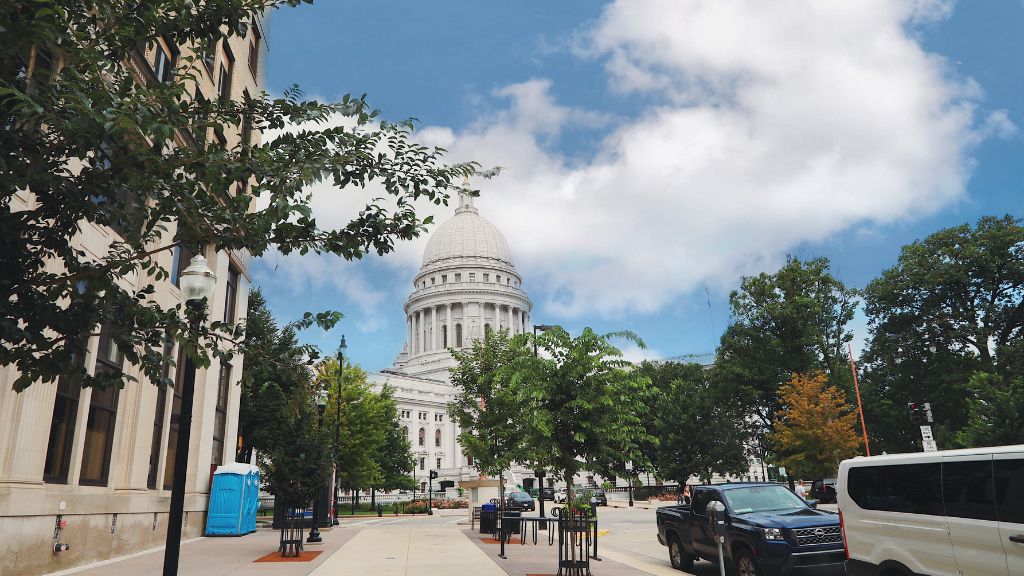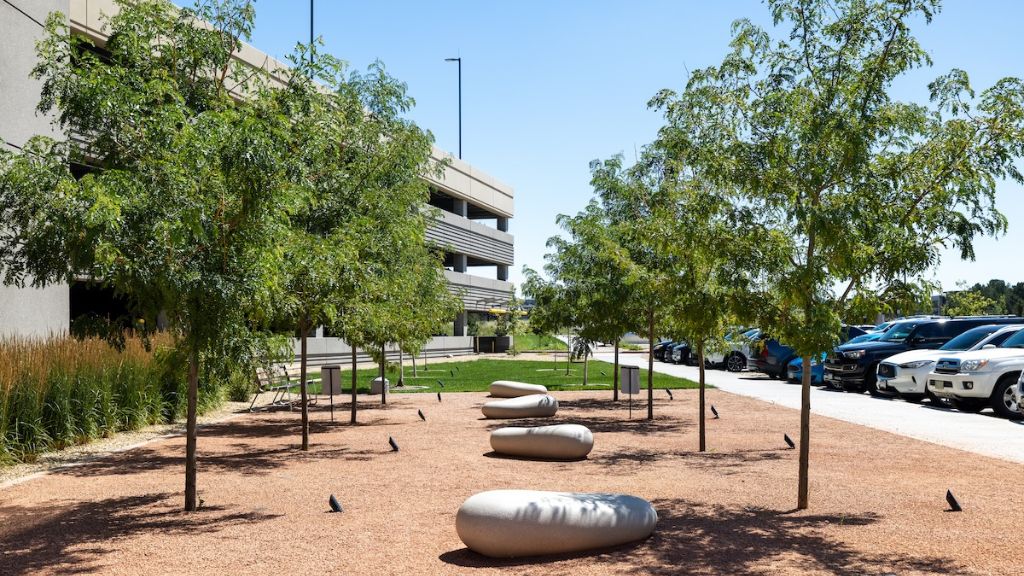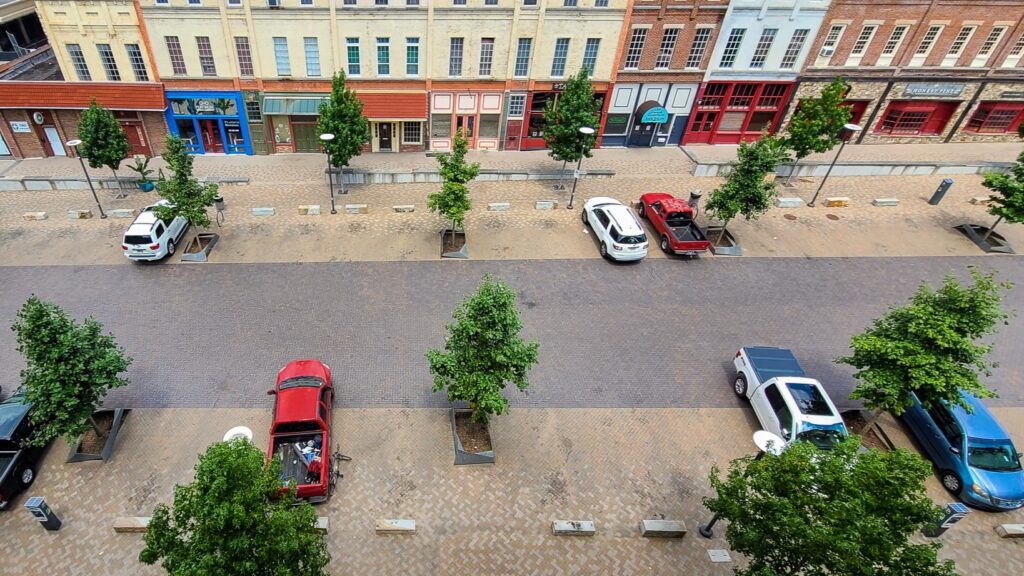Washington Avenue is a high traffic downtown street in St. Louis, Missouri that was redeveloped in 2016 / 2017 from 7th Street to Memorial Drive to improve lighting and maximize durability. Matching the design aesthetic of the previous two streetscape phases, which had significantly higher budgets, is where the challenge came in. With historic buildings lining the street, the design entailed working with individual building owners in addition to city officials to ensure project success.
To provide value and durability to the streetscape, the project designers envisioned a grove of healthy street trees along the sidewalk, providing not only the aesthetic appeal longed for, but also the many benefits that healthy trees offer – like oxygen creation, carbon mitigation, health improvement, reduction in urban heat island effect, noise abatement, and traffic calming – to name just a few.
However, the hardscape requirements of a heavily urbanized street like Washington Avenue, are contrast to the natural needs of healthy tree establishment. Couple that with basements that extended all the way under the sidewalk and out to the street curb, as can sometimes be the case with extremely urban downtowns, and you’ve got yourself some very constrained planting areas. Then of course, the question of how to successfully integrate trees into a street like this is raised.
These challenging site conditions created a situation where every available cubic foot of space needed to be maximized to the fullest extent to provide the soil volume needed to realize the vision for the street trees being planted. RootSpace, boasting the largest usable void space of any soil cell on the market, means that the readily available soil for trees is maximized as much as possible.
Underground tree pits were used to link the subsurface soil volumes together where possible to provide high quality rooting space within the non-compacted soil filled RootSpace system. The constant replacement of trees, as is often the situation with street trees, was something that the designers did not want for this space and as such, GreenBlue Urban’s ArborSystem was the solution.
The development of this public realm has created the intended space of a sought-after streetscape. In addition to the tree elements, LED light fixtures now improve site and pedestrian lighting, and long linear promenade pavers in varying shades of gray reflect the surrounding urban context while providing a more modern aesthetic feel.
Project
Location
Contractor
Landscape Architect
Washington Avenue is a high traffic downtown street in St. Louis, Missouri that was redeveloped in 2016 / 2017 from 7th Street to Memorial Drive to improve lighting and maximize durability. Matching the design aesthetic of the previous two streetscape phases, which had significantly higher budgets, is where the challenge came in. With historic buildings lining the street, the design entailed working with individual building owners in addition to city officials to ensure project success.
To provide value and durability to the streetscape, the project designers envisioned a grove of healthy street trees along the sidewalk, providing not only the aesthetic appeal longed for, but also the many benefits that healthy trees offer – like oxygen creation, carbon mitigation, health improvement, reduction in urban heat island effect, noise abatement, and traffic calming – to name just a few.
However, the hardscape requirements of a heavily urbanized street like Washington Avenue, are contrast to the natural needs of healthy tree establishment. Couple that with basements that extended all the way under the sidewalk and out to the street curb, as can sometimes be the case with extremely urban downtowns, and you’ve got yourself some very constrained planting areas. Then of course, the question of how to successfully integrate trees into a street like this is raised.
These challenging site conditions created a situation where every available cubic foot of space needed to be maximized to the fullest extent to provide the soil volume needed to realize the vision for the street trees being planted. RootSpace, boasting the largest usable void space of any soil cell on the market, means that the readily available soil for trees is maximized as much as possible.
Underground tree pits were used to link the subsurface soil volumes together where possible to provide high quality rooting space within the non-compacted soil filled RootSpace system. The constant replacement of trees, as is often the situation with street trees, was something that the designers did not want for this space and as such, GreenBlue Urban’s ArborSystem was the solution.
The development of this public realm has created the intended space of a sought-after streetscape. In addition to the tree elements, LED light fixtures now improve site and pedestrian lighting, and long linear promenade pavers in varying shades of gray reflect the surrounding urban context while providing a more modern aesthetic feel.
Project
Location
Contractor
Landscape Architect
Project
Location
Contractor
Landscape Architect







